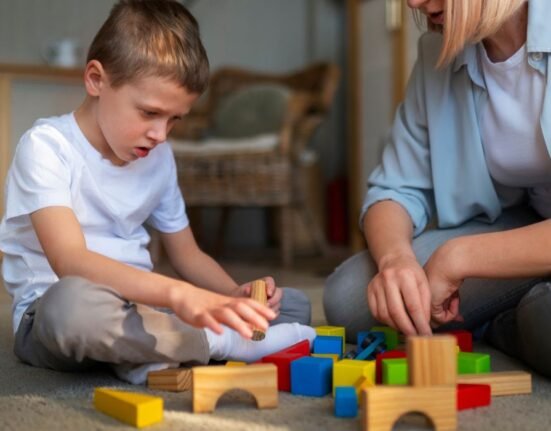With rising awareness about mental health on social media and other sources of information, the term “trauma” gets thrown around a lot. But do we know what it means, and how it can be overcome? Read on to know more about it.
What is Trauma?
Trauma refers to an unpredictable distressing event and the resultant physical, emotional, spiritual or psychological response. These events are likely to threaten the individual’s sense of safety and might also seriously threaten their life or that of others.
Read More: Post Traumatic Stress Disorder: A private war?
Some types of trauma
There are some types of trauma. These include complex, acute, chronic, secondary or vicarious and adverse childhood experiences.
- Complex trauma arises when an individual undergoes repeated traumatic events multiple times, often without opportunities to escape.
- Acute trauma denotes the intense distress in an individual following a one-time distressing event. This reaction is of relatively shorter duration. Common examples include a car crash or the sudden death of a loved one.
- Chronic trauma occurs due to repeated and prolonged distressing events. This is seen as a response to behaviours such as bullying, any type of abuse, domestic violence and neglect.
- Secondary or vicarious trauma occurs in individuals who get exposed to the suffering of other people as they respond to injury, disasters, accidents and even death. An example of this would be the grief and secondary trauma doctors faced during COVID-19.
- Adverse Childhood Experiences (ACE) entail a wide range of difficult situations that are directly experienced or witnessed by children when they grow up. Since these events happened before they have developed effective coping skills, the course of development for such children is likely to get disrupted and the effects of trauma typically spill over onto adulthood.
Read More: Study: Adverse childhood relation with increased risk of chronic pain during adulthood
Responses to trauma
The amygdala, an almond-shaped structure in the brain is responsible for the detection of threats. In threatening situations, the amygdala sends warning signals to multiple physiological systems to prepare itself for defence. This kickstarts the sympathetic nervous system, because of which adrenaline, noradrenaline and stress hormones are released. These hormones prepare the body for fighting, fleeing or a freeze response. These hormones return to normal, and the stress fades out in the absence of the threat. In the case of a person who suffers from long-term trauma, their amygdala becomes hyperactive.
Read More: Psychology behind Traumatic Events
As a result, minor disturbances are detected as threats, leading to the secretion of stress hormones. As individuals suffering from it live continuously in defence mode, they experience problems with sleep and other physical issues due to the hormonal imbalance in their bodies. These individuals are more susceptible to psychological conditions such as Post-Traumatic Stress Disorder (PTSD), and depression. Although the responses to traumatic events differ from person to person, some common physical and psychological symptoms and responses to trauma are as follows.
Physical symptoms and responses to trauma
The psychological symptoms and responses to emotional trauma include one or many of the following:
- Fatigue
- Hypervigilance
- Changes in appetite
- Increased heart rate
- Getting startled easily
- Always feel on edge
- Difficulty sleeping or insomnia
- Body aches and muscle tension
Psychological symptoms and responses to trauma
The psychological symptoms and responses to emotional trauma include one or many of the following:
- Dissociation
- Guilt or shame
- Helplessness and fear
- Anger and/or avoidance
- Dramatic shifts in mood
- Depression and/or anxiety
- Nightmares and flashbacks
- Social withdrawal and anhedonia
- Changes in behaviours and attitudes
- Intrusive thoughts about the traumatic event
- Difficulty in concentration, attention and memory
- Denial, or refusing to believe that the traumatic event occurred
- Emotional numbness and compassion fatigue (in repeated secondary trauma)
How to manage trauma by yourself?
Here are some ways in which you can manage your responses to it and restore your emotional stability.
- Eat a well-balanced diet, exercise regularly, and get adequate sleep.
- Accept and validate yourself. Be patient and give yourself time to heal.
- Stick to a routine. This brings some order and predictability to your life.
- Avoid indulging in alcohol, drugs, smoking and other addictive activities.
- Avoid making major life decisions soon after experiencing the traumatic event.
- Communicate what you feel and experience with trusted people. You could also try journaling.
- Notice if you avoid certain things such as a particular activity, involvement in work or social engagement.
- Ask for help and support. You could also get help by joining support groups, either in your locality or online. This option is effective if the groups are facilitated by trained professionals.
Treatment for trauma
If you feel that your symptoms persist and significantly interfere with your daily life and functioning, it is recommended that you seek professional help. Psychologists, therapists, and other mental health professionals work with individuals to help them heal and recover from the negative impact of traumatic events. Trauma-informed care is a holistic treatment wherein past trauma and maladaptive coping mechanisms of the individuals are recognized and treated.
Read More: Power of Self-Care in Trauma Recovery
Cognitive Behavioural Therapy addresses the negative effects of early it in youth diagnosed with PTSD and mood disorders, as a result of violence, abuse or unresolved grief. Eye movement desensitization and reprocessing (EMDR) also utilizes principles from Cognitive Behavioural Therapy along with eye or body movements to help process this. Psychiatrists also prescribe medications such as antidepressants and anti-anxiety medications to help deal with the physical and physiological symptoms of trauma.
Post-Traumatic Growth
Post-traumatic growth can also happen if the individual accepts the difficult experience and uses it as an opportunity to develop resilience and a strong sense of self-efficacy. These individuals form stronger relationships, have a spiritual purpose, and gain a deeper understanding and appreciation for life.
In conclusion, it can be painful, but it could also be an opportunity for growth. However, it is always recommended to seek professional help and lean on loved ones for support if need be.
References +
- https://www.healthline.com/health/traumatic-events#management
- https://www.apa.org.https://www.apa.org/topics/trauma/stress
- https://www.verywellhealth.com/what-is-trauma-5212104
- https://www.psychologytoday.com/gb/basics/trauma
- https://www.verywellmind.com/common-symptoms-after-a-traumatic-event-2797496













Leave feedback about this